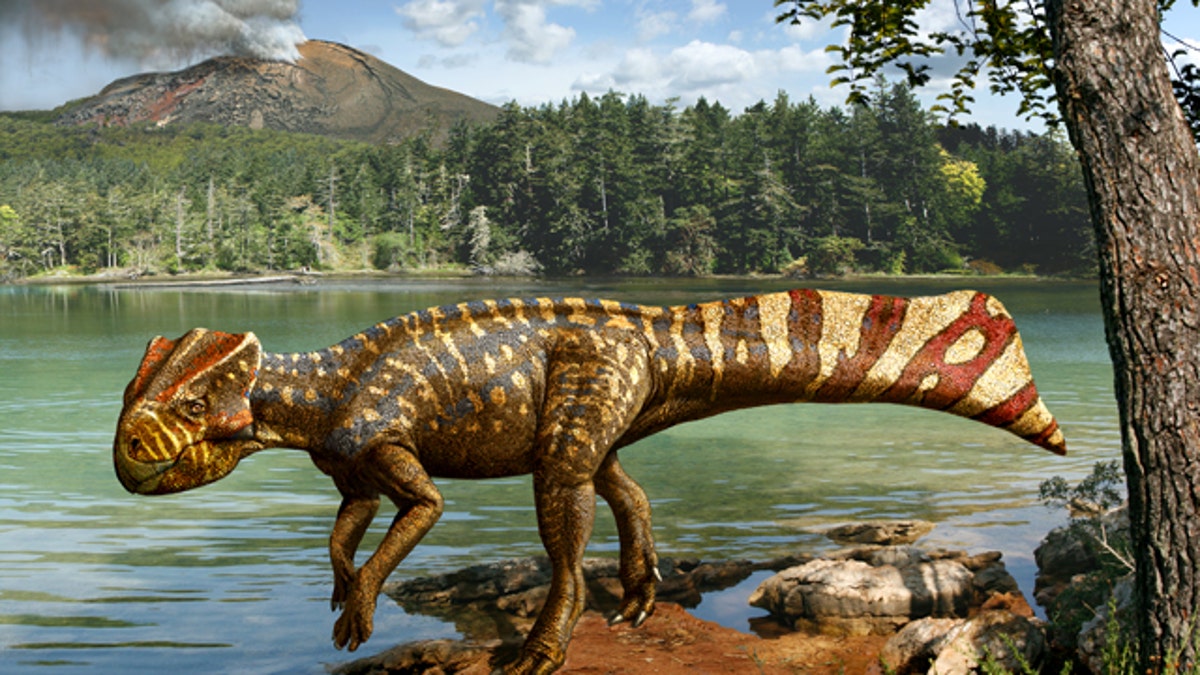
An artist's depiction of the fossil remains of Koreaceratops hwaseongensis, the first ceratopsian dinosaur from South Korea, were found in a block of rock along a reservoir in Korea. (Julius T. Csotonyi / Cleveland Museum of Natural History)
Triceratops has a new cousin -- one from a distant continent, that is.
Scientists from South Korea, the United States and Japan just announced the discovery of a new horned dinosaur, based on an analysis of fossil evidence found in South Korea. Dubbed "Koreaceratops" after its country of origin, the new dinosaur fossil was found in 2008 in a block of rock along the Tando Basin reservoir.
At approximately 5 to 6 feet long and weighing between 60 and 100 pounds, the animal was relatively small compared to its geologically younger, giant relatives like North America's Triceratops.
Koreaceratops had a parrot-like face with a beak at the front of its jaws, indicating it was an herbivore. The claws on its hind feet suggest that it was bipedal and moved at a fairly rapid speed. Koreaceratops had a unique fan-shaped tail formed by long neural spines, which suggests it may have been a good swimmer, and spent part of its time hunting for aquatic food.
It is one of the first articulated dinosaurs known from Korea, said said Michael J. Ryan, curator and head of Vertebrate Paleontology at The Cleveland Museum of Natural History, who co-authored the research.
"This is a rare find," said Ryan in a release announcing the discovery. "Fossils of dinosaurs have not typically been found in this region, whereas evidence of dinosaur eggs and footprints occur more commonly. This specimen is significant because it fills in a missing 20 million-year gap in the fossil record between the origin of these dinosaurs in Asia and their first appearance in North America."
The newly identified genus, Koreaceratops hwaseongensis, lived about 103 million years ago during the late Early Cretaceous period. The specimen is the first ceratopsian dinosaur from the Korean peninsula. The partial skeleton includes a significant portion of the animal's backbone, hip bone, partial hind limbs and a nearly complete tail.
Results from the analysis of the specimen were published in the November 18 online edition of the journal Naturwissenchaften: The Science of Nature.
